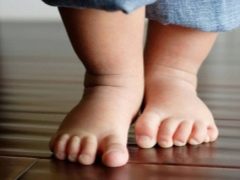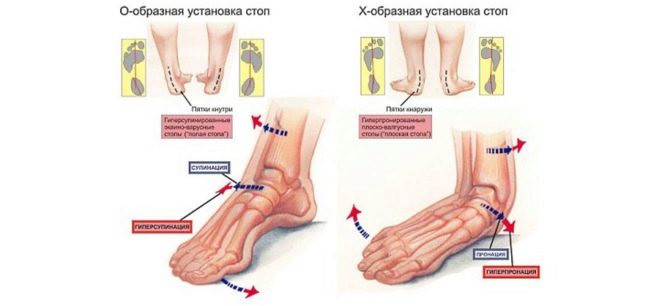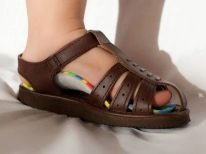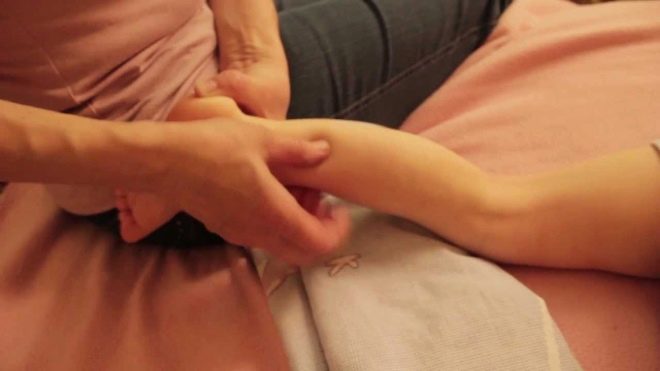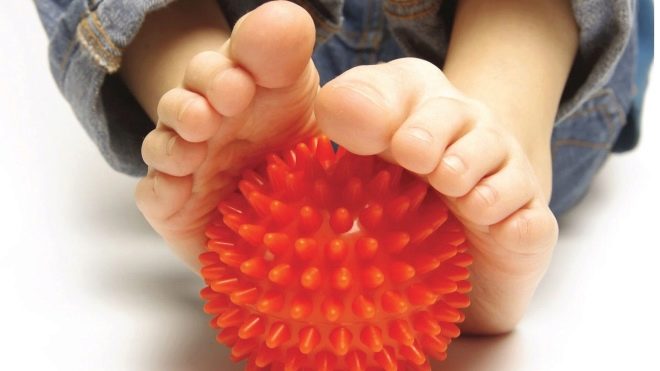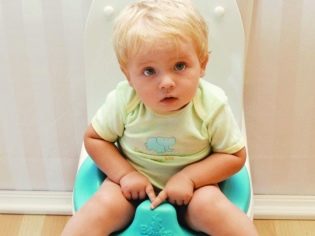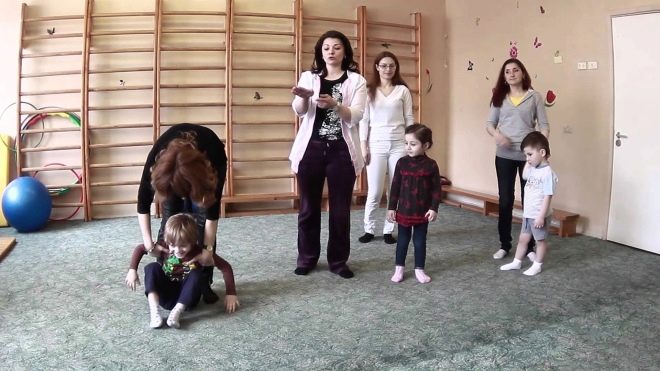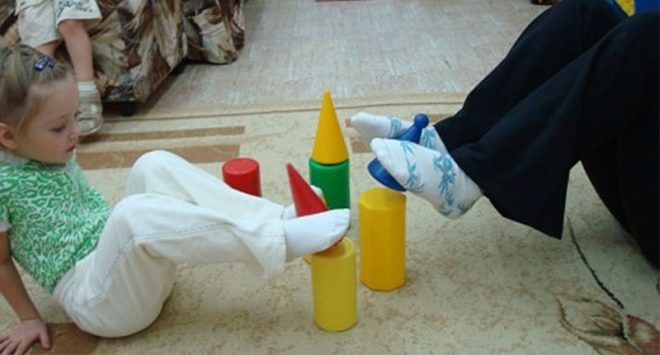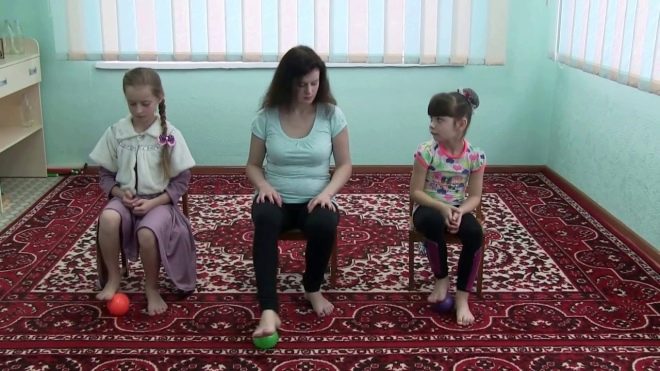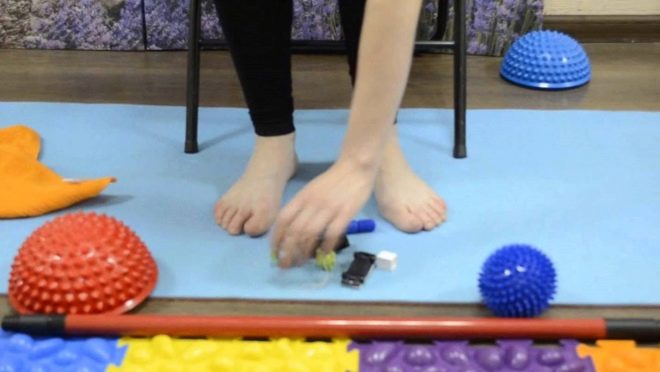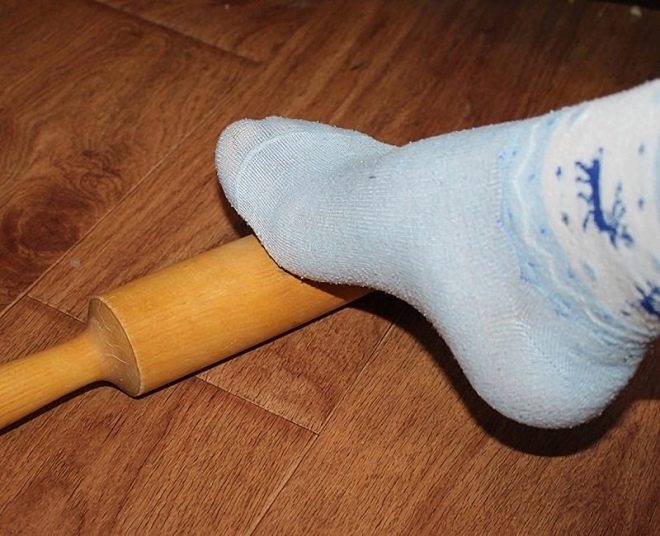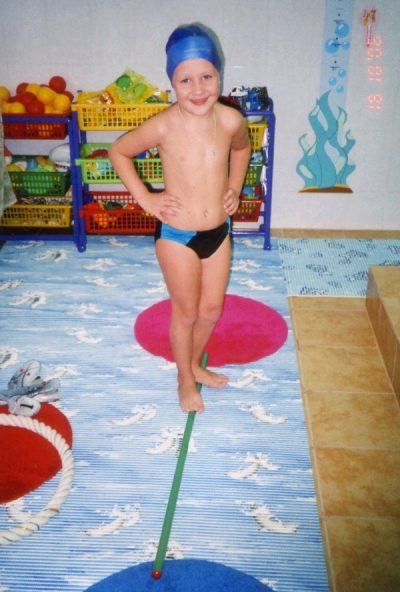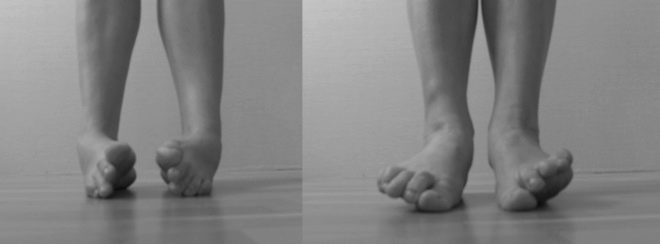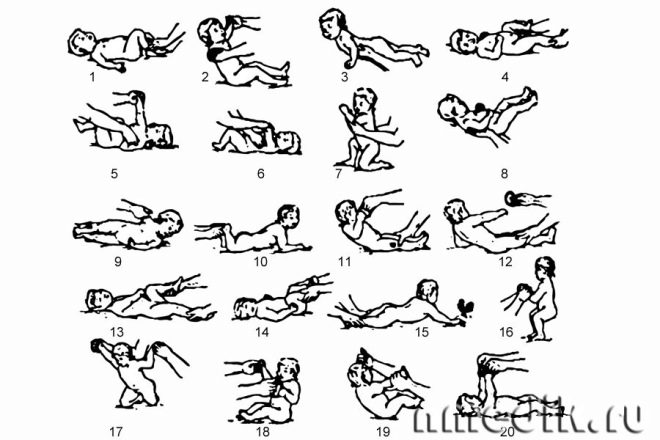Exercises for valgus foot deformity in children
Valgus deformity of the feet - a diagnosis in childhood is not uncommon. Incorrect placement of the child on the legs with the displacement of the foot on the inside, “piled up” of the foot, which creates the illusion of X-shaped legs, can be caused by various reasons. But the treatment methods for flat-valgus deformities are used about the same. If conservative treatment is indicated, parents will have to master a specialized massage and special therapeutic exercises. How to conduct such classes, what exercises can be offered to a child, we will discuss in this article.
The benefits of gymnastics
Incorrect placement of the child on the deformed foot leads to an incorrect distribution of the load on the musculoskeletal system. The center of gravity is shifting, the wear of the hip and knee joints increases. The spine also suffers - the child’s posture with valgus deformity of the feet is not correct, and the gait is awkward.
Valgus curvature is very often accompanied by flattening of the feet, that is, valgus and flatfoot are simultaneously recorded. Flat feet, necessarily require treatment and support, otherwise the child may remain disabled.
The scheme of conservative treatment usually includes the wearing of orthopedic shoes, massage, exercise therapy. Gymnastics, which is quite possible to perform at home, belongs to the category of medical. Each child is assigned its own complex - it depends on the degree of valgus and flatfoot, on the severity and angle of deviation from the norm. But the basic exercises for all children with this diagnosis are about the same.
The benefits of gymnastics is to effectively supplement the massage and orthopedic effects. The task is to relax the ligaments and muscles in tension. Gymnastics allows you to stretch such muscles, to increase their elasticity. The blood circulation of the feet, ankle and hips is improved. Gradually, the muscles take the correct position and keep the foot in its normal installation. The distribution of the load on the lower limbs changes naturally.
Special features
If we consider therapeutic gymnastics in case of valgus staging of the feet separately, then it will be difficult to judge its effectiveness. The best results are usually observed when they start charging immediately after the preliminary foot massage. An orthopedic massage is also prescribed by a doctor, but it can be done at home on their own, provided that the masseuse tells the mother how to massage the feet correctly with varying degrees of abnormalities.
Parents who have firmly decided to deal with valgus in a child on their own will have to be patient - massage effects will be carried out with multiple courses, wearing orthopedic shoes can be recommended all the time, gymnastics and should be daily. If the kid and his parents are not lazy, they will definitely be able to cope with the problem, but not as quickly as we would like. Sometimes it takes a year, sometimes one and a half or more.
The medical complex of exercises for this pathology is best done barefoot. Gym shoes, socks and everything else must be left until better times.
As long as there is such a problem as valgus, it is necessary to fight it without sparing your own nerves and children's heels.
Indications and contraindications
There are not so many contraindications for gymnastics. If we talk about the underlying disease, the gymnastic load is not recommended for 3 and 4 degrees of valgus deformity. First, in such cases, surgical treatment is usually prescribed. A child will go to exercise therapy, including home gymnastics, only after the rehabilitation process is completed.
A temporary ban on gymnastics is imposed if the child has a fever, if he is unwell, he has vomiting and diarrhea. It is impossible to conduct gymnastics with some disorders of the vestibular apparatus, in which it can be difficult for a small patient to maintain balance.
Gymnastics should be abandoned in case of increased pain in the feet, knees after a massage or when performing exercises. This, though rarely, but still happens, and requires mandatory consultation of the orthopedist - it is possible that massage or gymnastics were performed incorrectly.
Gymnastics is not recommended for children with epilepsy and an increased tendency to the occurrence of seizures. With great care, preferably only under the supervision of an exercise therapy doctor, such a gymnastics is performed for children with congenital heart and blood vessels.
Therapeutic sports complex can be very effective in the first and second degrees of valgus and flat valalgus deformities of the feet. Most exercises can be used separately for flat feet.
Effective exercises
If there are no contraindications, the orthopedist has approved home classes in gymnastics, you can proceed. Gradually, you will come up with your own, unique exercises, when you come to an understanding of the essence of gymnastics and the goals you need to achieve. But at first, it is recommended to use a program that has been developed and tested by many mothers and children, approved by the Ministry of Health, and used in a number of medical centers for physical therapy.
The lesson will be held in three stages. It is not necessary to put all the exercises in the first charge. Start with 1-2 exercises of each stage and gradually increase the load by adding new tasks, increasing the time for performing already familiar tricks and exercises.
Position "sitting"
For this part of the charge, you will need a small hard chair with a back. A child who is seated on such a chair should have legs on the floor, they should not hang in the air.
- "Hedgehogs." For this exercise, you will need a small ball, for example, a tennis ball. But it is best to use special orthopedic balls that have an uneven, bumpy texture. Put the ball on the floor and ask the child to roll it around the circle with arcs, zigzags. Repeat the exercise with the second foot. Later, you can use two “hedgehog” balls at once for simultaneous performance of the task with two legs.
- "Lost". For this task you need a piece of silk cloth or a handkerchief, as well as pencils. Lay out the items on the floor in front of the sitting child and ask him to collect toes pieces of cloth and "lost" pencils.
- "Help the heroes of the tale." For this task, use toys from chocolate eggs surprises and a small box, for example, from shoes. Spread out the toys in front of the child, telling the story. You can invent a fairy tale about how the little animals went on a journey, and they were overtaken by a thunderstorm. The task of the baby is to quickly collect all the small toys with their feet and put them in the box (also, of course, with their feet). As you achieve success, the number of toys can be increased.
- "Cheesecakes". For this exercise fit the most common rolling pin, which is available in the kitchen of every hostess. Put it on the floor, put both the child’s feet on the rolling pin and ask them to roll it back and forth as far as possible so that the feet are fully engaged - from the tips of the fingers to the heels.
When performing standing
For a set of exercises in this position, you will need a gymnastic stick or a stick from a wooden mop, as well as an orthopedic mat (fairly stiff, with convex textured elements or a needle base). If there is no rug, you can do it yourself, gluing shells, buttons, corks and other small objects to the fabric.
- "Ropewalker". Put a stick on the floor and ask the child to walk sideways through it and back. Keep your fingers and heels touching the floor. Complicate the task when the child is ready - ask him to squat, standing on a stick (toes and heels should also be on the floor).
- “Narrow Path”. Ask the child to clasp the recumbent gymnastics stick with the legs so that only the inner parts of the feet touch it; the outside should rest on the floor. When the baby learns to stand confidently, ask him to be like this, without letting go of the stick, shuffling along the outside of the soles.
- "Clown". Ask the child to introduce himself as a clown and show how funny he can walk. The task is to walk "herringbone", waddling, spreading his feet in different directions and touching heels. Finish with rolls from heel to toe and walking on toes. All these exercises can be performed on a massage orthopedic mat.
Lying on the rug
For this part of the charge you need a mat that does not let in the cold - there are special gymnastic mats.
- "Swing". Put the child on his back, take his feet in his hands and ask the child to bend and unbend the feet away from and towards you. Your hands will be an obstacle, the load that your baby needs to overcome.
- "Helicopter". Ask your child to show how the blades of the helicopter work - to depict circular motions, he should stop in the supine position.
- "Bicycle with a load." The bent legs of a reclining child must cycle, but with resistance. To do this, you can rest your legs on mom's hands. Mom should easily put pressure on her feet.
- "Bridge on the road." The child is lying on his back, his legs are bent at the knees, his feet are divorced in different directions, the heels are touching. The task of the child is to raise the lower back in such a position and skip the typewriter that the mother shouts with “Bi-bi” rolls “under the bridge”.
It is useful to walk through the peas after charging. Also useful bikes and scooters.
On the technique of performing exercises for valgus deformity of the foot in children, see the following video.
